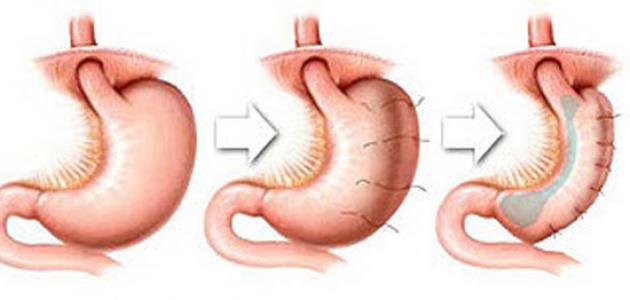Contents
The spleen
There is the spleen at the top of the left side of the abdomen to the left of the stomach , and spleen role in the work of the immune system, by filtering the blood and purified, and helps to attack the bacteria that cause diseases such as pneumonia pneumonia and meningitis , in addition to its role in recycling old red blood cells, as well as storing white blood cells and platelets. In fact, the size of the spleen varies from person to person, but it is often the size of a fist by about 10 cm, and is often purple in color. It is worth noting that the spleen is covered by the rib cage, so a person cannot feel it unless it is significantly and noticeably enlarged. [1]
splenomegaly
The weight of the spleen in the normal position is about 150 grams, and the length of the spleen from its top points to the bottom is about 11 cm, and the increase in the size of the spleen than normal is known as splenomegaly , and some scientists have defined splenomegaly as reaching a weight of about 400 -500 grams, and that reaching a weight of 1000 grams is considered extreme inflation, and other scientists have defined that the enlargement of the spleen is moderate if the length of its largest diameter is 11-20 cm, while inflation is severe if the length of the largest diameter exceeds more than 20 cm. It is worth noting that the diagnosis of an enlarged spleen used to be done by clinical examination, but in light of the development we have reached, the diagnosis of splenomegaly became possible by imaging in simple cases. It should be noted that an enlarged spleen is a rare disease. The number of people infected with it in the United States of America is approximately 2% of the total population. [2] [3]
Causes of an enlarged spleen
There are some reasons that lead to an enlarged spleen, and among these reasons are the following: [4] [5]
- Blood disorders: The increase in the tasks assigned to the spleen in terms of filtering or reprocessing blood cells may cause the spleen to enlarge , and accordingly, infection with any diseases or conditions that destroy red blood cells cause the spleen to strain to filter and remove the broken cells, for example what happens in cases of deformation of the shape Blood cellsRed blood cells, as in thalassemia, also known as Thalassaemia, sickle-cell anemia, and spherocytosis, in which case the red blood cells may break down When it passes through small blood vessels such as capillaries, which increases the burden on the spleen to get rid of them, and among the cases that cause the spleen enlargement also hemolytic anemia in which red blood cells are broken.
- Impaired blood supply : Poor blood supply in the spleen due to a decrease in the amount of blood flowing through the splenic vein may cause the spleen to enlarge and enlarge its size, and this condition often occurs in patients who suffer from liver diseases , Or portal hypertension, and this problem may also appear in people with congestive heart failure.
- Cancer: Some cancers may spread to the spleen, causing it to enlarge, and on the other hand, some types of cancers, such as leukemia, known as leukemia, cause abnormal white cells to be produced that invade the spleen, causing an increase in its size.
- Metabolism disorders: The incidence of one of the diseases resulting from impaired metabolism may cause an enlarged spleen, and these diseases include Gaucher's disease, Hurler syndrome, and Niemann-Pick disease , Amyloidosis, and sarcoidosis.
- Infection: Some types of infection occurrence can cause enlargement of the spleen, including pulmonary tuberculosis , and malaria , and inflammation of viral hepatitis , and HIV , AIDS ( AIDS), cytomegalovirus, an infection known as infectious mononucleosis, which results from exposure to the Epstein-Barr virus, and rubella Rubella, Herpes simplex virus, Syphilis, Typhoid fever and many others.
- Exposure to strikes: Like traffic accidents , such strikes may damage and damage the spleen.
Symptoms of an enlarged spleen
People with an enlarged spleen may not show any symptoms sometimes, and some symptoms may appear in other cases, and these symptoms include the following: [6]
- Feeling the pain in the left side of the upper abdomen, and the pain may extend to the left shoulder.
- Feeling of fullness after eating a small amount of food or when not eating it at all, due to the pressure of the enlarged spleen on the stomach .
- Anemia .
- Recurring infection.
- Feeling tired and general fatigue.
- Bleeding easily.
Treating an enlarged spleen
The treatment of an enlarged spleen depends mainly on the treatment of the cause, and the treatment aims primarily to prevent the aggravation of the problem and the occurrence of complications such as the explosion of the spleen and the injury of the abdomen, and it can be said that splenectomy is one of the methods used in the treatment of an enlarged spleen, and the excision is a surgery that carries many One of the complications, including the increased possibility of infection with some types of infection, and therefore the patient may be advised to take vaccinations against these types of infections, and the patient should see a doctor immediately after exposure to a fever after this operation because such cases require strong antibiotic treatment. [3]
References
- ↑ Matthew Hoffman, "Picture of the Spleen , " www.webmd.com , Retrieved December 24, 2017. Edited.
- ↑ Neetu Radhakrishnan (Apr 29, 2016), "Splenomegaly" , emedicine.medscape.com , Retrieved December 24, 2017. Edited.
- ^ A b Jennifer Chapman; Alexandre M. Azevedo (October 5, 2017), "Splenomegaly" , www.ncbi.nlm.nih.gov , Retrieved December 24, 2017. Edited.
- ↑ "Enlarged Spleen (Splenomegaly)" , www.medicinenet.com , Retrieved December 24, 2017. Edited.
- ↑ "Splenomegaly" , www.radiopaedia.org , Retrieved December 24, 2017. Edited.
- ↑ "Enlarged spleen (splenomegaly)" , www.mayoclinic.org , Retrieved December 24, 2017. Edited.











